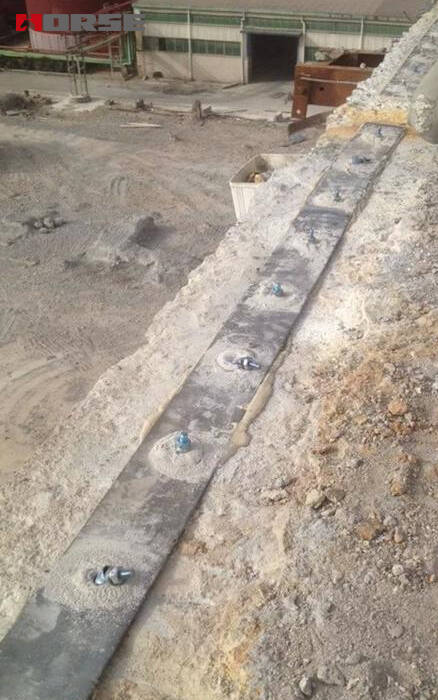Soluciones
La gama de negocios de construcción de caballos se extiende a todo el mundo y sirve a miles de clientes con productos, orientación técnica especializada en construcción, y somos testigos del reinicio de la marca china con ellos.
In construction, the steel plate will be attached to the outer edge of the stressed part of the reinforced structure with structural steel plate bonding adhesvie, in order to give full play to the strength and effect of the steel plate, and to close the cracks in the pasted parts at the same time, to restrain the deformation of the concrete, and thus effectively improve the crack resistance and stiffness of the reinforced component.

In construction, the steel plate will be attached to the outer edge of the stressed part of the reinforced structure with structural steel plate bonding adhesvie, in order to give full play to the strength and effect of the steel plate, and to close the cracks in the pasted parts at the same time, to restrain the deformation of the concrete, and thus effectively improve the crack resistance and stiffness of the reinforced component.
1. When the main tensile stress area of bridge structure is insufficient, in order to strengthen and increase the shear strength of the structure, the steel plate can be pasted on the side of the structure and slanted vertically in the direction of the shear crack (the slope is generally 45° -60°) to bear the main tensile stress.
2. In order to improve the flexural ability of the bridge structure, the steel plate is generally attached to the surface of the pulling edge of the member, so that the steel plate and the original structure are formed as a whole. At this time, the local shear strength of the concrete at the bond of the steel plate and the concrete is controlled. The design of reasonable and safe should be controlled before the yield deformation of the steel plate, and the concrete does not appear shear failure.
3. How to ensure the overall stress of steel plate and reinforced component is the key to the success of sticking steel reinforcement. So, in the reinforcement design, besides the sufficient anchorage length of the steel plate and the sufficient bond strength and durability of the adhesive, the steel plate should be considered. In order to prevent the steel plate from degumming and pulling at the free end, the ends can be fixed with clamping bolts, or U type hoop plates, horizontal anchoring plates, etc. The bolt is fixed on the steel plate at a certain distance to ensure that the bonding force between the steel plate and concrete meets the needs of tensile or shear strength.
4. When the length of the steel plate is designed, the ends of the steel plate should be extended to the low pressure area to reduce the stress concentration in the anchorage section of the steel plate, so as to prevent the occurrence of cracks in the parts of the bonded parts or the pull off of the steel plate.
5. In structural design, the steel plates for reinforcement can be used in different shapes according to actual needs, but the thickness of the steel plate must be larger than the calculated thickness. The steel plate used for bending resistance is as thin and wide as possible. The thickness is generally 4mm-6mm, and the thin steel plate can have enough elasticity to adapt to the surface shape of the component. The thickness of the steel plate used for improving shear capacity should be thicker, depending on the design.
6. When the design is strengthened, the steel plate can be considered as the section of the steel bar, and the steel plate is converted into steel. The original component bears the constant load and the live load, and the steel plate will bear the part of the live load that the original component can not bear.
Puede encontrar cualquier cosa que necesite, confíe en probar estos productos y encontrará la gran diferencia después de eso.

Adhesión de acero y hormigón, utilizada para el refuerzo sísmico de muchos edificios.

Adhesivo de refuerzo estructural para revestimientos de acero.